Any Questions?
What Causes Elderly Muscle Spasms and How to Prevent Them
Getting older brings plenty of changes, and unfortunately, muscle cramps — especially in the legs — can be one of them. If you’ve ever been jolted awake by a painful spasm or had your walk interrupted by sudden leg cramps, you’re not alone. For many older Australians, these unexpected muscle spasm can be more than just annoying — they can seriously affect comfort, mobility, and sleep.
The good news? You don’t have to just put up with them. By understanding what’s behind these spasms and making a few simple lifestyle tweaks, you can stay ahead of the leg cramps and keep moving with ease. Let’s take a closer look at what causes them — and what you can do to keep them at bay.
What is a Muscle Spasm?
A muscle spasm, also known as a muscle cramp is a quick, involuntary tightening of muscle fibers that causes intense pain. This can last from a few seconds to several minutes, often making the affected area feel stiff and immobile. While usually temporary, the discomfort can be intense—especially when it strikes without warning.
For older adults, leg cramps are the most typical, especially during the night, often referred to as nighttime leg cramps or nocturnal leg cramps. These usually involve the calf muscles, but they can also affect the feet or thighs.
While often dismissed as minor, muscle cramps can impact an elder’s emotional health. Repeated nighttime awakenings can cause anxiety around sleep, while unpredictable spasms during the day may reduce confidence in mobility. Recognising this emotional toll is the first step in addressing not just the cramp itself, but its wider impact.
Top Causes of Muscle Spasms in Elderly
As we age, muscles naturally lose mass and flexibility, and nerves may not communicate as effectively with muscle fibres. This, combined with factors like dehydration, medications, and decreased activity levels, makes muscle spasms more frequent in older adults.
There isn’t a single cause, but multiple factors increase the likelihood of involuntary contractions in older populations. Let’s break down the most common contributing factors:
1. Dehydration and Electrolyte Imbalances
Reduced thirst sensation can lead to lower fluid intake. This often results in dehydration, affecting the balance of minerals like potassium, calcium, and magnesium, key elements in proper muscle contraction.
2. Poor Circulation
Inadequate blood flow to the leg muscles can result in muscle cramps, particularly during inactivity.
3. Medication Side Effects
Some common medications, including diuretics, statins, and medications for high blood pressure, can deplete essential electrolytes or contribute to nerve sensitivity, making cramps more frequently.
4. Sedentary Lifestyle
Muscles weaken when not used regularly. Reduced physical activity or long periods of sitting may lead to muscle fatigue, making the elderly more susceptible to muscle cramps.
5. Overexertion and Strenuous Exercise
On the other end of the spectrum, engaging in unfamiliar or excessive physical activity, especially without a proper warm-up, can overload the muscles, resulting in cramps or other muscle cramps.
The Trouble with Night-Time Spasms
Nocturnal leg cramps are particularly distressing because they interfere with sleep and can lead to sleep anxiety. These involuntary contractions often target the calf muscles and tend to occur in a resting state, sometimes as the body cools or shifts position.
For some older adults, especially those living independently, partnering with community resources can offer added support. For instance, some might benefit from services like the Campbelltown aged care services to access daily assistance and wellness programs that reduce muscle strain and encourage movement—both of which can support cramp prevention.
Preventing Night-Time Disruptions
Night-time leg cramps can be especially frustrating. Small adjustments in the evening can make a big difference:
- Avoid caffeine and alcohol before bed
- Keep your bedroom warm enough to prevent muscles from cooling too quickly
- Maintain a sleep schedule to support your body’s natural rhythms
If you notice certain habits or patterns that trigger night muscle cramps, keep a log. Tracking your routines, hydration, and diet can help identify what’s contributing to cramps and guide your next steps.
What To Do When Muscle Cramps Occur
Despite best efforts, muscle cramps occur—and when they do, knowing how to respond can alleviate the discomfort more quickly.
Immediate Relief Steps:
- Gently stretch and massage the affected area.
- Apply a warm towel or heating pad.
- Walk around slowly to improve circulation.
- Flex your foot (heel down, toes up) during a calf cramp.
When to See a Doctor
While many muscle cramps are harmless, persistent or severe episodes may point to underlying conditions such as nerve compression, diabetes, or circulatory issues. Medical consultation is advised when:
- Muscle cramps become frequent and unmanageable
- Intense pain caused by a muscle locked in spasm
- Muscle weakness follows the leg cramp
- Leg swelling or skin discolouration appears
How to Prevent Leg Cramps in the Elderly
Although it’s difficult to eliminate muscle cramps entirely, you can take meaningful steps to significantly reduce their frequency and severity.
1. Stay Hydrated
Encourage consistent fluid intake throughout the day, even if the sensation of thirst is weak. Electrolyte-rich beverages like coconut water or oral rehydration solutions can help balance mineral levels essential for proper muscle contraction.
2. Stretching Before Bed
A few gentle stretches—especially targeting the calf muscles and hamstrings—before lying down can help prevent leg cramps that occur overnight.
3. Gentle Physical Activity
Low-impact activities such as walking, swimming, or tai chi can improve circulation and muscle tone, reducing the risk factors for muscle spasms.
While moderate movement is beneficial, overly strenuous exercise without appropriate recovery can lead to muscle cramps, especially in seniors unaccustomed to heavy activity. It’s important to:
- Ease into new routines
- Warm up and cool down properly
- Monitor muscle soreness or tightness
- Allow sufficient rest between sessions
4. Adjust Sleeping Position
Using pillows to elevate the legs or keep the feet flexed can improve circulation and decrease pressure on the leg muscles during rest, which may help prevent leg cramps.
5. Warm Compress or Epsom Salt Baths
A warm compress or a soak in an Epsom salt bath before bed can soothe tired or tight muscles, helping them relax and lowering the chance of muscle cramps overnight.
6. Nutritional Considerations
A diet rich in magnesium, calcium, and potassium is vital. Leafy greens, bananas, avocados, dairy, and nuts are beneficial for muscle health. If needed, a doctor may suggest supplements to fill any dietary gaps that could be contributing to muscle cramps.
7. The Role of Footwear and Support
Wearing supportive shoes, especially for individuals with flat feet or poor posture, can reduce strain on leg muscles and prevent muscle cramps. Orthotic inserts can also help align the body and improve muscle function.
Understanding risk factors—both modifiable and non-modifiable—helps in creating a more comprehensive prevention strategy.
Building a Muscle Cramp-Resilient Routine
Adopting daily habits that support muscle health doesn't have to be difficult. Here's a practical look at a sample daily routine to support elderly Australians dealing with muscle cramps:
Morning
- Begin your morning with a large glass of water, ideally consumed with or shortly after breakfast.
- Incorporate a short, gentle stretch session soon after waking. Focus on the calves, thighs, and feet—common cramp-prone areas.
- Include foods like bananas, oranges, or even a small serving of avocado. These are excellent sources of potassium, an important electrolyte that supports nerve and muscle health.
Afternoon
- After lunch, take a short walk outdoors or, if mobility is limited, perform simple seated leg lifts or ankle rotations.
- Sip on water or herbal tea regularly throughout the afternoon. Herbal teas like chamomile or ginger can also offer additional anti-inflammatory benefits.
- Aim to include leafy green vegetables in your midday meal. These provide magnesium, calcium, and other nutrients vital for muscle relaxation and function.
Evening
- A short stretching session in the evening—particularly focusing on the calves, hamstrings, and lower back—can help reduce the risk of cramps during the night.
- A soak in warm water can relax affected muscles and soothe any discomfort. You might also add Epsom salts, which provide magnesium through the skin.
- While watching TV or reading before bed, prop your legs up on a cushion or pillow. Elevating the legs helps with circulation and may reduce fluid retention, which can contribute to nighttime cramps.
Consistency in daily habits can build muscle strength and improve circulation, making it easier to keep cramps at bay.
Final Thoughts
Muscle cramps are a frequent concern for older adults, but they don't have to become a constant disruption. With the right preventative steps — including staying well-hydrated, engaging in light physical activity, stretching regularly, and eating a balanced diet rich in essential minerals — it's entirely possible to ease their impact. These small lifestyle adjustments can go a long way in reducing both the frequency and severity of leg cramps, helping you stay comfortable and mobile throughout the day and night.
By taking a proactive approach to muscle health, you can reclaim a sense of ease and confidence in your movements. Whether it's enjoying a leisurely walk, a restful night’s sleep, or simply the everyday rhythm of life, staying cramp-free means embracing more of the moments that matter — with comfort and calm as your everyday companions.

FOCUS Connect, a registered not-for-profit charity, provides practical assistance and support services to disadvantaged and marginalised individuals. As a My Aged Care provider, we offer Home Care Package and Commonwealth Home Support Programme services across South West and Northern Sydney. Additionally, we are a leading provider of community services to multicultural and culturally and linguistically diverse (CALD) populations across South West Sydney.
Need Support or Know Someone Who Does?
If you need support, call us at 02 4627 1188 or contact us via our online enquiry form, and we will get back to you shortly to discuss your needs and how we can assist you. If you know someone who could benefit from our services, refer them to FOCUS Connect to help them receive the support they need and deserve.









